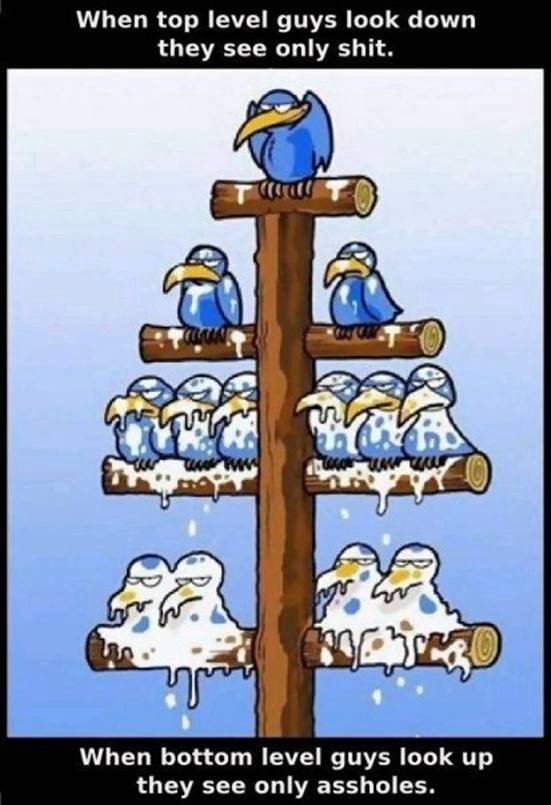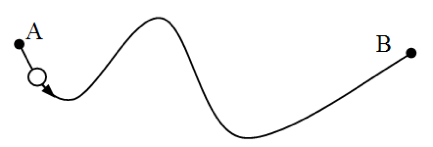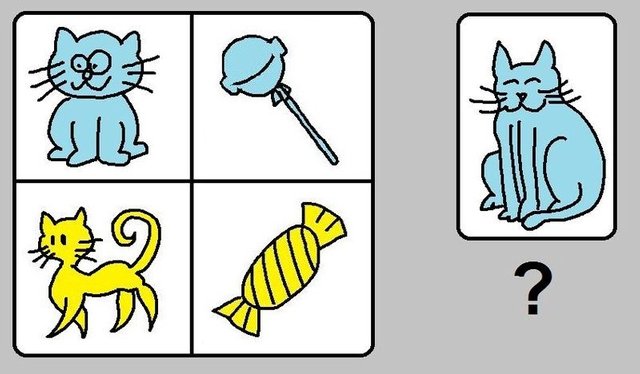The 10 Skills Every Entrepreneur Needs to Develop

When solving problems we create simplified models, or abstractions of reality, which help us to process the critical elements of some scenario. Because simply put we don’t have the power to handle all the variables (A, B, C etc) that come from real life. The following two steps outline how we naturally handle this variability.
- Step one of critical thinking is our capacity to, both funnel the sensory stimulus of the world into discrete data points, and then create meaning from those data points in the form of increased understanding about reality at one moment in time.
2. Step two is to create webs over time of these data points. These webs give us an understanding of reality that’s; accurate, projectable to other situations, and consistent across time.
This process is constantly ongoing moment to moment. You’re doing it right now as you read this article. By understanding the process of processing the information dump of reality, we can more efficiently draw potent conclusions, which compounded over time give us the rich cognitive capacity to work with complex problems.
The ongoing process of honing this capability is known as Crystallized Intelligence and is defined as:
“One’s lifetime of intellectual achievement, as demonstrated largely through one’s vocabulary and general knowledge.”
Tools: Logical Fallacy Map, Critical Thinking Skills
3. Creativity
Creativity is defined in The Innovators DNA as:
“Your ability to generate innovative ideas is not merely a function of the mind, but also a function of five key behaviours that optimize your brain for discovery.”
These five key behaviours are:
- Associating: drawing connections between questions, problems, or ideas from unrelated fields.
- Questioning: posing queries that challenge common wisdom.
- Observing: scrutinizing the behavior of customers, suppliers, and competitors to identify new ways of doing things.
- Networking: meeting people with different ideas and perspectives.
- Experimenting: constructing interactive experiences and provoking unorthodox responses to see what insights emerge.
This model is fascinating for a number of reasons.
- It shows the leaps humans uniquely make, once we i) understand the problem ii) and find the patterns. Enabling us to iii) synthesize solutions.
- Each of these individual activities can be done by anyone, and creativity is them being done in aggregate. Which means creativity can be trained.

A 2012 Adobe study on creativity shows only 1 in 4 people believe they are living up to their own creative potential. This is a key indicator of why falling rates of entrepreneurship mirror falling creativity rates.
Globalized business is accelerating the complexity of our problems, and we lack the skills to understand these systems, and to synthesize solutions to them.
However if we can learn to unlock our creativity, and further to implement the innovations we generate. We can create ventures which have an exponential impact over what was possible in the more nationalized past.
Tools: Wheel of Life Assessments, The Artists Way (specifically the Morning Page tool), Clean Sweep Program, Innovator Competency Map
4. People Management
There are two components of people management.
- People. This means EQ, inspiring, motivating, encouraging, and leading.
- Management. This means hiring, firing, training, disciplining, evaluating, and directing.
These two components may seem at odds. But the effective manager expertly balances both as they move their team towards their goal. That may be as a representative of a corporation attempting to meet some strategic goal. Or as an individual entrepreneur leading those around them towards some desired end state.
The main job to be done by the people manager is drawing out the best of the people around them. Top to bottom organizational leaders enable success.
Effective people managers balance cooperation, respect, self-motivation, and trust. Inherent to leading others is leading oneself. Thus the effective people manager knows their internal rhythms, they’ve aligned their actions with their goals, and have harnessed the discipline required to weather the ups and downs of any Big, Hairy, Audacious, Goal.
To sum up: Imagine you’re sitting in your office. A star employee walks in. They’ve been offered a better position at a rival firm. They’re thinking of taking it, but they wanted to check in with you first. You need to lead this situation to create the best outcome for yourself, your company, and the star employee. How do you respond?
Scenario 2. Your CFO walks in. They say you’re not going to meet some financial target for this period. You’ve got to roll up your sleeves and manage this situation.
In both cases action is required of you. Yet the situations are drastically different. One requires leadership, the other management. Yet both can occur for an entrepreneur in a given day. You must be an expert at both.
Tools: 360 Degree Feedback, 12 Mental Models, NLP Perceptual Positions, CPQQRT Task Assigning Framework, Understanding Behaviour

5. Coordinating With Others
People management inherently has power imbalances. Manager and employee. Team leader and team member. The most powerful entrepreneurs know how to operate when they’re on either side of the equation, and when they’re balanced with their peer.
This peer could be a fellow manager, or entrepreneur. It could be an investor, partner, or stakeholder in your field. The point here isn’t looking out at the world and seeing a hierarchy.
It’s about recognizing when their are mutual dependencies, or when those dependencies are one sided or situation specific. For example employees rely on employers for income, while employers rely on employees for output. Whereas fellow entrepreneurs may rely on each other for mutual benefits to their business model.
That’s what coordinating with others is all about — understanding other people, and having the tools to manage mutually dependent relationships.
Tools: Enneagrams, Myers-Briggs 16 Personality Types, Hofstede’s 6 Cultural Dimensions, 8 Steps Change Model
6. Emotional Intelligence
Emotional intelligence is being able to understand and manage the emotions of yourself and others. It includes three skills:
- Emotional awareness — knowing when and what feelings are present in ourselves and others. It includes emotional literacy, which is being able to label these emotions and thus act upon them. At its highest level one can anticipate emotions from external and internal stimulis and thus regulate them over time.
- Harnessing emotions — after awareness and literacy, or recognizing and understanding, comes acting on emotions to enable healthy relationships with others, and with ourself. Once we control our emotions we can lead interactions with others, diffuse tense situations, and generally lead those around us in a mutually beneficial way.
- Managing emotions — The culmination of the previous two skills is being able to anticipate, understand, harness and then manage emotions proactively. Instead of reacting, we respond with the appropriate emotion. You need calm to focus on some task? The emotionally intelligent manager can regulate their internal state to create that emotional presence. The same applies for creating enthusiasm for a task in our team.
Imagine a customer calls you. They’re upset. An order they were relying on was late, and they lost a client as a result. They’ve been a loyal customer for years and you’ve let them down.
It may or may not have been your fault, or the fault of someone in your company. But they’re an ally, a friend, and a customer. An entrepreneur with high emotional intelligence can handle the situation.
Watch for your internal reactions to the thorny situations that crop up today. How do you act? Do you ride the wave? Or do you analyze, understand and respond with the emotion you desire to feel?
Tools: MoodGym, Emotional Self Regulation, Human Emotions Chart

7. Judgement and Decision Making
Judgement and decision making is a combination of complex-problem solving, critical thinking, creativity, people management, coordination and emotional intelligence.
It’s being able to analytically assess a situation, understand the implications, recognize the scope and possibilities, harness your organizational resources both internally and externally, and oversee the solutions implementation.
This is an extremely hard thing to do consistently and it requires great mental discipline, willpower, and focus. The most effective entrepreneurs do this daily. They escape the trap of putting out the day’s fires, and instead focus on solving the organization’s highest level problems. The ones you, as a leader, can’t see today. The problems firms are running towards without realizing it.
Problems like Kodak not realizing it was missing the digital revolution. Or perhaps FaceBook missing its chance to proactively tackle its data privacy issues.
The point here is that organizational leaders need to harness these entrepreneurial skills to proactively confront the impending, and present problems unique to their value proposition.
8. Service Orientation
Service orientation is defined as:
“The ability and desire to anticipate, recognize and meet others’ needs, sometimes even before those needs are articulated.”
From the perspective of an organizational leader, I think the conversation around service orientation should focus on servant leadership.
The phrase Servant Leadership was coined by Robert K. Greenleaf’s 1970 essay “The Servant as Leader”:
“The difference manifests itself in the care taken by the servant-first to make sure that other people’s highest priority needs are being served. The best test, and difficult to administer, is: Do those served grow as persons? Do they, while being served, become healthier, wiser, freer, more autonomous, more likely themselves to become servants? And, what is the effect on the least privileged in society? Will they benefit or at least not be further deprived?“
As a perspective on leadership this concept is ground-breaking. Generally we think of organizations as benefiting those in the highest positions the most. The CEO is paid the most, and then the benefits trickle down.

Servant leadership flips this hierarchy upside down. The CEO is responsible to the MOST people. They above all others need to help everyone in their organization: self actualize, support their families, and rise above their economic station.
Those in the most junior positions have the most people encouraging them, and seeking to help them become better servants themselves as they grow and flourish.
Think about the diagram above again. But instead of organizational waste products like blame, busy work and making coffees. Those on the bottom were instead absolutely splattered in encouragement, learning opportunities, meaningful work, care for their home lives, and emotional/mental health support.
In that world organizations would come to resemble families more than machines. This is what Frederic Laloux calls a “Teal Organization” in his insightful work “Reinventing Organizations”. The Moment, an innovation consultancy, found by shifting their company to Teal, they created more purpose, balanced decision making, and transparency.
Ask yourself as you work moving forward — in this moment am I acting as a servant or as a power leader?
Tools: Level 5 Leadership, Value Proposition Canvas, Business Model Canvas, Transformational Leadership Model, Path-Goal Theory of Leadership
9. Negotiation
Negotiation is the process by which parties mediate differences. Ideally compromise or agreements are reached which avoid arguments and dispute. The principles driving negotiation are:
- Fairness,
- Mutual Benefit,
- And Maintaining Relationships.
To effectively negotiate a leader needs a clear understanding of their current position, as well as their desired outcome, the path connecting these two creates their strategy.

Imagining an actual path both parties are moving along. We can imagine negotiation as the process where two parties with crossing paths compromise so as to both deviate from their separate paths as little as possible.
In this model it’s obvious transparency, trust, and mutual understanding are paramount to becoming enablers and not obstacles to each others paths. This holds true anywhere in life. Whether it’s romantic relationships, friendships, peers, or family. We’re constantly negotiating our desires, beliefs, hopes, and uncertainties with those of the people around us.
Whether we choose to act as allies, and mutual enablers is up to each of us. By “taking the high road” and being the first to operate openly, you create a space where others can follow your lead.
Try it. As you negotiate your unique path, attempt to understand the paths of those around you, how they align with yours, and how, as partners, you can help each other to better move along your separate paths.
Tools: The Conflict Process Model, 5 Conflict Handling Styles, Zone of Possible Agreement, Communication Process Model

10. Cognitive Flexibility
Cognitive flexibility has two components.
- The ability to switch between thinking about two different concepts.
- The ability to think about multiple concepts simultaneously.
Here’s an example. This image contains two concepts organized by two categories: colour and object type. Someone whose cognitively flexible can separate the concept from the specific implementation i.e “blue” separated from the blue cat, and then recombine or pull new concepts into new objects like a blue dog, or grey cat.

Cognitive flexibility draws both on ones critical thinking — what is and isn’t, and their creativity — what could be.
As an entrepreneur you’re constantly switching between different tasks, and dealing with different variations of similar problems. The more you can reduce your cognitive “switching cost”, and better synthesize new solutions from varying fields and disciplines. The better equipped you are to operate in an environment of uncertainty and speed. As most entrepreneurs do.
Tools: Read Books, One of Many Brain Training Apps, Fluid Vs Crystallized Intelligence, Environment as a Factor in Intelligence